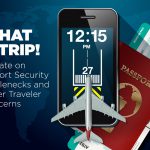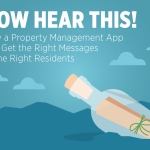I got back from last week’s Cisco Live! Las Vegas inspired, fired up and more than a little amazed. There’s always so much to take in—from keynotes to breakout sessions to casual conversations with people you meet along the way. The most exciting takeaway for me was that the industry’s first true virtual beacons are now available, thanks to a company called Mist Systems (founded by former Cisco executives, recipient of strategic funding from Cisco Investments).
Each Mist wireless access point includes an array of Virtual Bluetooth Low Energy™ (vBLE) beacons that give it hyperlocation capabilities. Because the access points are managed and enabled by the Mist Cloud, they have significant advantages over traditional battery-powered beacons. For companies looking to set up a new location infrastructure, Mist delivers the benefits of both Wi-Fi and BLE. Those with an existing Wi-Fi network can still use Mist’s vBLE devices to efficiently add location capabilities.
Why are virtual beacons exciting?
There are myriad location technologies, as we’ve explored before. Beacons are especially good for indoor short-range applications, such as indoor navigation and in-store proximity marketing. Instead of installing multiple small physical beacon devices, Mist’s virtualized solution enables businesses to create and “install” multiple beacon zones within any given floorplan using far fewer physical devices. And those devices can be managed and even repositioned with a few mouse clicks.
Ultimately, this technology makes beacon-enabled location services much more flexible, manageable and cost-effective, which means they’re a more viable option for more businesses and organizations.
Virtual beacons and the user experience
Combined with next-generation mobile apps (like the ones we build here at Phunware), virtual beacons will enable more businesses to take greater advantage of location and context. Instead of being limited to a beacon at the front door, for example, a store could implement multiple beacon zones to deliver context-appropriate messages and gather behavioral data via their customer mobile app. The store marketing team could even move those beacon zones around as seasonality and customer traffic patterns dictate.
I can see opportunities for virtual beacons across all kinds of industries, from healthcare to retail to airports, entertainment venues, museums, multi-unit residential properties and many more. For example, the next time I go to a convention like Cisco Live!, the Mist solution could be used to log me in to the conference’s wireless network, allow me to download the event app and prompt me to stop by the registration table (with turn-by-turn navigation).
There’s a great story about how Mist’s founders got their inspiration. As Julie Bort reported in Business Insider, CEO Sujai Hajela’s daughter wished there was a way for networks to “simply put information about wherever she was at her fingertips.” With virtual beacons, brands can not only make contextually-relevant information available, but create a contextually-relevant experience.








